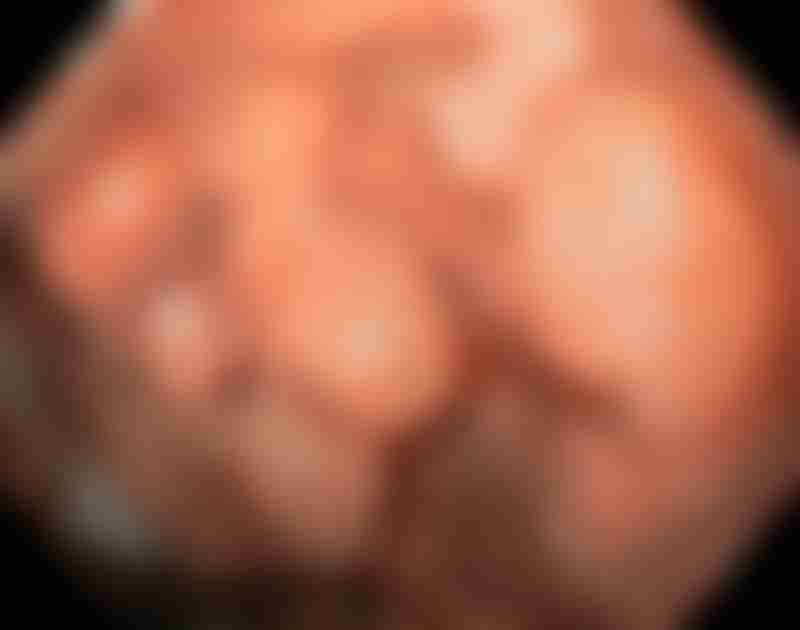Gastric Adenocarcinoma and Proximal Polyposis of the Stomach: Symptoms, Diagnosis and Management

Source: Shutterstock
What is gastric adenocarcinoma and proximal polyposis of the stomach?
Gastric adenocarcinoma and proximal polyposis of the stomach (GAPPS) is a rare hereditary gastric cancer syndrome caused by a point mutation in the promoter IB region of the adenomatous polyposis coli (APC) gene. It is characterized by the formation of lesions, known as polyps, within the inner lining of the stomach wall. Polyps caused by GAPPS have a higher likelihood of developing into intestinal-type adenocarcinomas, a specific type of stomach (gastric) cancer. Therefore, individuals with GAPPS have an increased risk of getting early-onset gastric cancer.
Does GAPPS cause any symptoms?
Polyps typically do not cause any symptoms, which makes GAPPS harder to diagnose and is often detected by chance during tests and scans for other stomach-related issues. However, some people with GAPPS have reported symptoms such as indigestion, abdominal pain and internal bleeding, which can be caused by larger polyps. If the internal bleeding persists, the patient may develop iron deficiency anemia.
How is GAPPS diagnosed?
Diagnostic tests and scans

Endoscopic view of fundic gland polyps (FGPs) in the gastric fundus. Source: Gastrolab/Science Photo Library
GAPPS is often discovered incidentally during these tests and scans, such as:
- Upper gastrointestinal endoscopy: This procedure uses an endoscope to look at the inside of the upper gastrointestinal tract (i.e. the esophagus, stomach and duodenum), and which may be done to investigate gastroesophageal reflux disease, dyspepsia (indigestion) or other unexplained upper gastrointestinal symptoms.
- Biopsy: If doctors find any abnormal-looking areas in the stomach that could indicate the presence of GAPPS, such as fundic gland polyps (FGPs), they can use a snare to remove tissue samples from the polyps, or the whole polyp, for testing. This is known as a biopsy or polypectomy. Subsequently, biopsy samples are examined under the microscope to see if the polyps have become cancerous. Doctors may also want to perform further testing to check the samples for mutations in the APC gene.
Diagnostic criteria
GAPPS is diagnosed using clinical criteria, which include:
- Presence of gastric polyps only in the middle and upper portion of the stomach
- Over 100 polyps in the upper stomach or over 30 polyps for those with a parent or sibling with GAPPS
- Tissue examination that indicates the majority of polyps present are FGPs
- Family history that suggests an autosomal dominant mode of inheritance, and
- Ruling out other heritable polyposis syndromes (e.g. familial adenomatous polyposis)
Treatment and management
Currently, there are no established guidelines for the clinical management of GAPPS; which approach to go for largely depends on a multidisciplinary team that takes into account each patient’s specific cancer risk. If doctors find that the GAPPS-associated polyps in the stomach have turned cancerous, treating the condition should be based on the standard treatment options for gastric cancer. If gastric cancer has not already developed, management strategies include a prophylactic (preventative) total gastrectomy or endoscopic surveillance. Although the lack of guidelines may seem concerning, rest assured that doctors will work with patients to create a personalized treatment plan that can effectively manage this disease.
Prophylactic total gastrectomy
A prophylactic total gastrectomy (PTG) is a surgical procedure that involves removing the entire stomach with the small intestine (jejunum) joined to the food pipe (esophagus). This is to prevent the growth and spread of cancer within the organ. It is recommended for people who fulfill the GAPPS clinical diagnostic criteria, have FGP progression to dysplasia and have tested positive for mutations in the promoter IB region of the APC gene.
PTG can be a complex procedure and there is a significant risk of postoperative complications, like weight loss and vitamin B12 deficiency anemia. For this reason, doctors will carefully assess their patient’s condition and the risks associated. Knowing how to cope with these complications can also be very helpful in ensuring a smooth recovery period and minimizing any negative impact on their quality of life.
Endoscopic surveillance
This approach involves an intensive regimen of endoscopic surveillance with biopsies, with the aim of preventing gastric cancer from developing and / or early identification of cancer (if it develops). Since there are currently no guidelines on the recommended frequency of endoscopic procedures, the rigor of the surveillance regimen should be discussed with the doctors. The decision of where to biopsy within each gastric region is also left to the doctors’ or endoscopist's discretion.
However, endoscopic surveillance has been questioned as an effective management option for GAPPS. Researchers have reported many cases of GAPPS patients developing gastric cancer despite frequent endoscopic surveillance. This can be attributed to two reasons. First is the rapid progression of FGPs to dysplasia and subsequently metastatic adenocarcinoma. Secondly, the change of FGPs to gastric adenocarcinomas may not be visible on endoscopic appearance, which runs the risk of missing sites of malignant transformation in the stomach. Additionally, there remains the inability to adequately sample the upper four-fifths of the stomach, which is covered by large gastric polyps, by endoscopy.
For these reasons, a PTG should be offered to all GAPPS patients with fundic gland polyposis harboring regions of high-grade dysplasia on gastric biopsy who are fit for major surgery. If the option of PTG is not offered, GAPPS patients should discuss this treatment with their doctors. The doctors can evaluate the patient’s condition and determine if PTG is a suitable treatment for them.